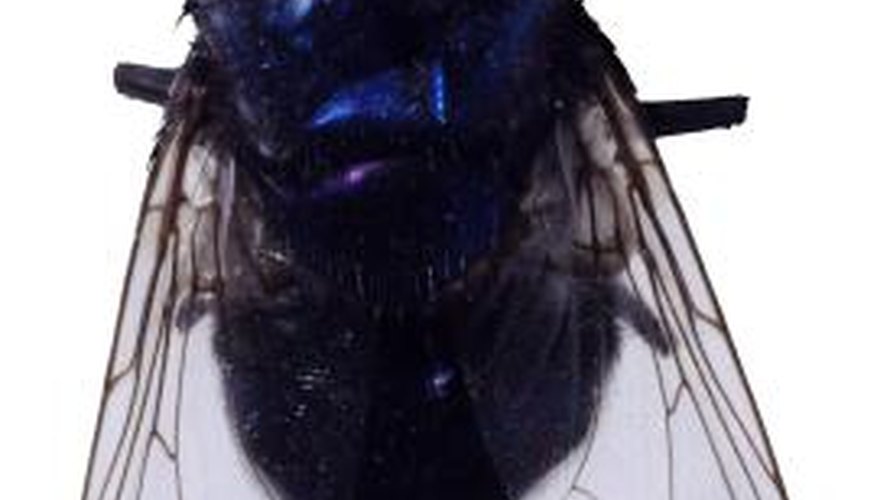If you suddenly find your home infested with flies in March, don't worry -- your home hasn't become the new Amityville house of horrors. More importantly, the flies aren't new. They have most likely been there all winter. A number of flies enter homes in the fall and overwinter in cracks in your walls and attic; you were just unaware of their existence until they emerged. Of all the different flies, four are most likely to be found in homes in March.
Cluster Flies
The most likely candidate for a spring fly infestation is cluster flies. Cluster flies are dark grey with yellow hairs on their backs. They like to overwinter in the top floors and attics of homes, especially on south- or west-facing walls. They emerge when the weather warms up and then become active in your home. The only positive aspect of cluster flies is that they do not feed or reproduce in homes and buildings. Once you get rid of them, they are gone.
- The most likely candidate for a spring fly infestation is cluster flies.
- The only positive aspect of cluster flies is that they do not feed or reproduce in homes and buildings.
Drain Flies
Drain flies, or moth flies, are tiny, hair-covered flies that look more like moths and are small enough to fit through most screens. They feed on the organic material and bacteria that forms in drains. Although they are not a common problem in homes, they can emerge from drains in the early spring. If your home has suddenly become overrun with drain flies, you may have a pipe that is leaking or broken.
- Drain flies, or moth flies, are tiny, hair-covered flies that look more like moths and are small enough to fit through most screens.
Little Houseflies
Little houseflies, or lesser houseflies, as their name implies, are smaller than houseflies but looks quite similar. They are about 1/4 inch long with a yellowish abdomen and three brown stripes on the thorax. Adults overwintering indoors start becoming active in late February. Within a couple of days, female flies start laying eggs on any moist, decaying surface. New flies emerge from pupae in mid-March.
- Little houseflies, or lesser houseflies, as their name implies, are smaller than houseflies but looks quite similar.
- Within a couple of days, female flies start laying eggs on any moist, decaying surface.
Blow Flies
Blow flies are in the same family as cluster flies and are often found in homes during the winter and spring. They are easily identified by their noisy, buzzing flight and shiny, metallic bodies. They are scavengers that tend to feed on manure or carrion. A large number of blow flies are often a sign that an animal like a mouse or squirrel has died in your home. Blow flies require decaying material to lay their eggs.
- Blow flies are in the same family as cluster flies and are often found in homes during the winter and spring.
